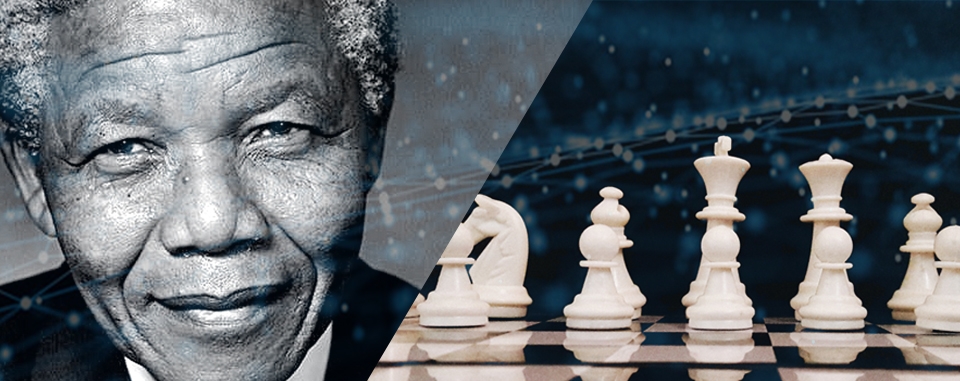
Artificial intelligence and Machine learning: what’s the difference?
Christian, our guru of algorithms, has a new, tough role to play in the office today: he’s in the shoes of a professor, trying to explain to me – marketing analyst, so not really a tech profile – the difference between AI and ML. The experience is not totally new for him, since he has been teaching at the university for a long time!
Let’s start by asking him a basic, simple question: What is meant by the terms “Artificial intelligence” and “Machine Learning”?
The expressions Artificial intelligence (AI) and Machine Learning (ML) often appear among the common buzzwords that are nowadays used for describing the domain and characteristics of innovative services and products. Often, they are used interchangeably and as synonyms but in reality they are not the same thing. In fact, Machine Learning is a subset of AI, whereby “Artificial Intelligence” refers to any machine that interactswith the environment and takes decisions accordingly in order to achieve a goal.
Alright! But then, I wonder when can a device of this kind be considered an example of ML and when not?
Well, it basically depends on the degree of initiative granted to the machine. In fact, if a list of instructions have been provided by a human and the machine does not have to acquire any knowledge by itself, then we might be in the presence of AI. Differently, we are dealing with an example of ML in cases in which machine does have to learn the instructions by itself.
Can you make a more concrete example to better enlighten this point?
Let’s consider two AI tasks (and, above all, the ways a device can be taught to carry them out): playing a chess game and recognizing a person in a picture. Imagine you have two machines and you want to instruct the first one to play chess and the second one to recognize pictures showing, say, Nelson Mandela. While, for a human being, the latter task is obviously much more simple, for a machine it is actually the other way around: in fact, while nowadays no device is capable of outperforming a person in recognizing an acquaintance of hers (yet), already in 1997 the Deep Blue computer could defeat Garry Kasparov, the by-then World Chess Champion.
Oh yes, I remember that news! How come?
Roughly speaking, computer programmers taught Deep Blue to play chess by rigidly incepting chess rules in it: such an inception was possible because chess rules come in limited number and they are very formal (a knight’s move is L-shaped, a bishop moves diagonally, etc.). The Deep Blue project would not have been even conceivable, had chess rules been difficult to describe and formalize.
So, simplifying a bit, it can be said that, any time a move had to be made, Deep Blue basically examined all possible choices. Is that right?
Exactly! If this choice is made, then the opponent will have this and that available countermove; if that specific countermove gets picked, then these other scenarios will open, and so on – till it found the best option. A human being usually finds it difficult to play chess just because her mind is soon overwhelmed by the complexity of all these ramifications and cannot process them efficiently. On the contrary the computer can, courtesy of specific algorithms – devising them was surely a major accomplishment on the programmers’ part. The computer did not use any sort of own “intuition” or “creativity”: the execution of each move was rather automatic, up to a point that, a posteriori, one of its developers even questioned the fact that Deep Blue was an example of Artificial Intelligence. Anyway, for sure it was not an example of Machine Learning.
But now let’s now go back to the second task: recognizing a person within a picture. How is this possible? And why is this considered Machine Learning?
Let’s now go back to the second task, that is, recognizing a person within a picture: in ML jargon, such a task is called classification. In principle, one could try to provide the machine with the same kind of formal rules as before: for example, the device can be told that the eyes are blue, the hair is curly and blonde and so on. However, on the one hand, describing all physical features in a precise and unambiguous way might not be possible (how much in detail could the shape of the cheekbone or of the jaw be described in a few words, for instance?). On the other, even apparently straightforward information might sometimes be misleading: if the person in a picture is wearing a wig at a Halloween party or sunglasses on a summer day, she will still be recognizable to any human; viceversa, the hair and eye colour incepted in the machine, being of no use or even wrong for that specific image, will likely trick the device into a mistake.
But anyone is aware that, at present, automatic facial recognition does work: how does one make a device capable of recognizing a person into an image?
Well, long story short, a computer must be provided with a good enough amount (thousands!) of images – some featuring the person, some others not -, so that it can autonomously identify a set of rules for recognising the subject. At this point, I bet that you got curious and that you are now wondering how this last process exactly works. Be a little patient and stay tuned, we will go more in depth in the next post of this series!
Did you enjoy this article?
Enter your e-mail address to receive our newsletter!
PS: don’t worry, we hate spam just as much as you do. We’ll send you just a couple of emails a year with a collection of the most interesting articles, it’s a promise!
